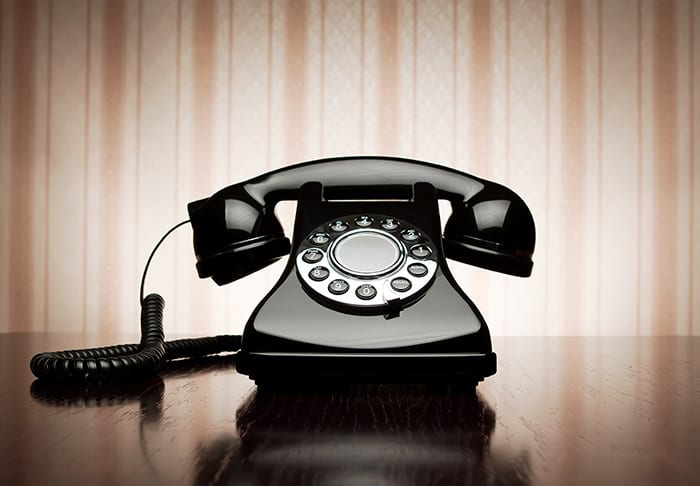Wondering what POTS or plain old telephone service entails and whether that is the best phone service for your business? Look no further. Here we explain how plain old telephone service works and the key terms to understand.
What is Plain Old Telephone Service?
Plain Old Telephone Service (POTS) refers to a phone line or traditional phone service which works through physical wires. This type of phone service enables analog voice transmission over copper pair wires. A POTS line is able to transmit voice messages across different countries and continents. Because of these abilities, POTS has been the standard phone service for individuals and businesses since its inception in the 1880s.
However, the creation of voice over IP or VoIP phone systems has seen a gradual shift towards POTS replacement options like cloud communications.
How Does a POTS Line Work?
Originally, transmission and communication between two points relied on an operator to connect them to the right place. With this technology, long-distance calling was more expensive than short-distance calling.
However, POTS automated the switching ability so that operators were unnecessary to the process. A POTS line works through copper wires connecting various points together. The phone service establishes a dedicated circuit between two points for the time of the transmission.
With a plain old telephone service, businesses are connected to central offices located nearby. And the central office, in turn, connects to long-distance offices or residents. This made communication transmission more digital and less manual. And it reduced the cost of long-distance communication. To connect parties, a call routes over one or more switches operating on local, national, or international levels.
Plain Old Telephone Service Technology
Some common terminology associated with POTS phone system technology are:
1. Circuit Switching
Now voice by itself cannot move through a POTS line. Sound waves need to be converted into electric signals to pass through the network. Copper wires are able to transmit analog signals, however, they need a dedicated switch to travel through. While dedicated circuits are reliable, the line is reserved for only one call.
Circuit switching required operators to plug wires into a common patch panel to connect two parties. Connections that required two exchanges would need two operators to plug the caller and receiver’s wires at the same time into the same wire called a trunk.
Then came automated switching which worked by responding to signals from a calling device. This type of switching eliminated the need for operators.
This switching was later replaced by the crossbar switch which is an assembly of switches among a set of inputs and outputs. This is a switch as each crosspoint. When this switch is closed, it enables the connection between one of the inputs and one of the outputs. This technology used common control networks that enable the switching network to conduct tasks such as call processing, monitoring, operation, etc. However, these devices were complicated and costly, as well, leading to the creation of the transistor.
2. Transistor
The transistor gave rise to digital networks enabling phone lines to carry digital signals in “packets.” Packets do not need the transmission channel to be an open and dedicated circuit. Instead, it transmits voice and other messages independently through the switches.
3. Modems
Modems were created to support the transmission of digital signals without overwhelming the system. Types of modems include:
DSL or Digital Subscriber Line enables data transmission over POTS lines. To do so, a transceiver connects to your PC and uses the local phone network to connect to an ISP network. This enables your use of the internet. This type of modem is useful to small businesses.
ISDN or Integrated Services Digital Network allows voice and data transmission over a regular phone line. To enable a connection, users dial in. And the fees for such service rely on the duration of the transmission. Large companies or businesses looking to expand in the future may find this modem more suited.
Plain Old Telephone Service for Business
Compared to VoIP or cloud phone systems, POTS may seem like the more expensive option. However, in areas where cellular or internet coverage is slow or inaccessible, copper lines are more reliable. When all else fails, you’ll find a POTS phone system to rescue you.
A basic plain old telephone service costs between $15-30 a month for unlimited local calls. One must keep in mind that other elements factor in as well, such as:
- Setting up infrastructure — The larger the business, the more set-up costs, plus the technician and maintenance cost.
- Additional features cost more — Intercom, call transfer, directories, etc.
- International calling — If your business conducts international business on a regular basis, then this bill can grow quite a bit.
POTS vs VoIP
Most businesses in the modern era are switching from POTS to IP telephony such as a VoIP phone system or cloud PBX. Voice over IP uses your existing internet connection to transmit voice and data from one party to the next. VoIP makes it possible to connect remote offices and keep communications stable. It also comes equipped with features such as IVR, call forwarding, dynamic caller ID, softphones, etc. Plus, it reduces international calling costs as costs are not based on distance and time but on a monthly subscription.
Which is Right for Your Business?
Does your business need a POTS or VoIP phone system? This depends on what your business communications entail, the size and budget of your business, as well as future expansion plans. Speak with one of our experts to identify the right outbound calling service for your company. Call us at 1 (877) 898 8646 to learn more!

